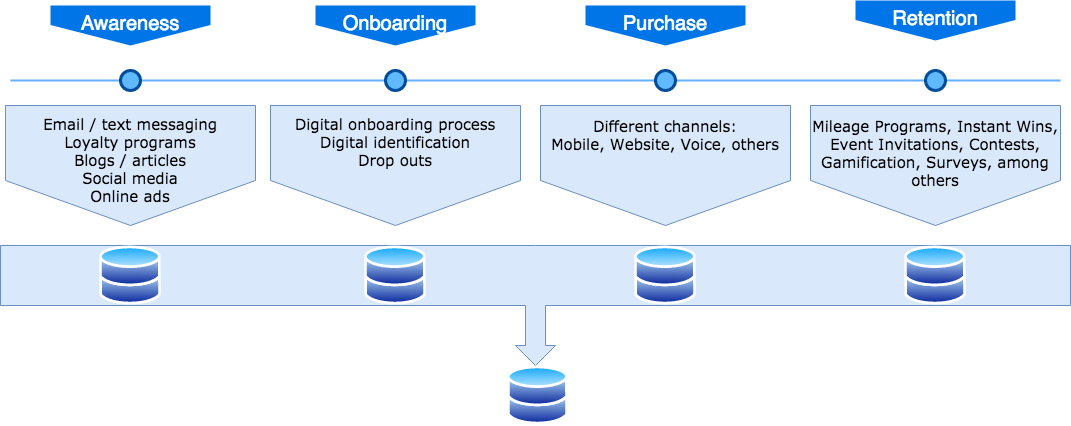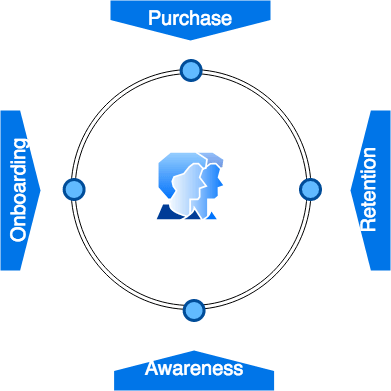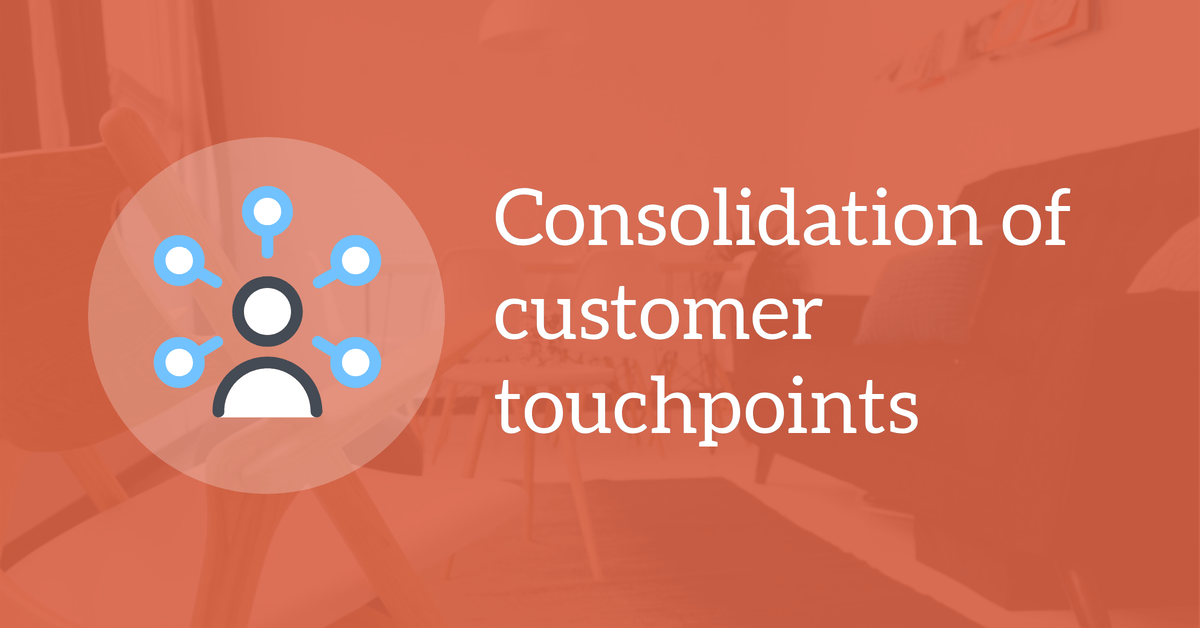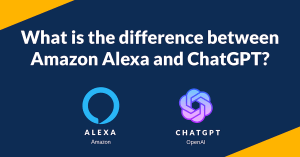The other day I received a promotional offer to switch from an energy plan to a different one with supposedly more benefits. The only issue is that 2 days ago I have switched to another plan with less benefits and more expensive. Sounds familiar? This type of disjointed customer experience triggers irritation for the lost benefits and due to the repetitive contact after the deal was agreed 2 days ago.
Isolated sources
Having multiple isolated data sources for customer touchpoints (mobile app, website, voice app, etc.) creates a difficult situation for your organization. In order to extract insights from your data; it is required to aggregate, model and present it appealingly.
Furthermore, when data is stored in different databases, it is challenging consolidating different sources into one because:
- Aggregating different technology databases is time-consuming and expensive
- Unifying assorted and unrelated models is a challenging endeavor
The following diagram represents the different stages of the customer lifecycle and the databases that get updated along the way:

Customer journey maps
A customer journey map is a visual tool that helps you define your customers’ needs, problems and engagement with your brand. The map is laid out as a timeline that plots every interaction a customer has with your business from awareness to repeat business. It helps you see what the customer experiences at every touchpoint.
Customer Journey Map: Everything You Need To Know – Forbes [1]
Consolidation of customer touchpoints
Consolidation of customer interactions at the customer touchpoint works as follows:
- Each time an interaction or event is created, then data is centralized in one system that will take care of aggregate data, model and present it in a way that can be understood and analyzed.
- This unified data model across departments allows generating meaningful promotions, campaigns and cross selling among many others as well as to follow the consumer journey and better understand their needs and what is their relationship with our brand.

Conclusion and closing remarks
Unifying channels across the value chain into a single customer oriented database has enormous benefits in the way your brand interacts with your customers. Loyalty programs such as Instant Wins, Event Invitations, Contests, Gamification, Surveys, among others are possible without having to go into complex exercises. Furthermore, it is relevant to include this consolidation plans as part of the overall customer engagement strategy [2].




